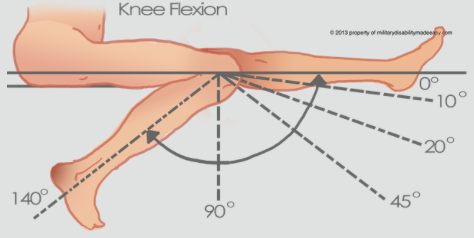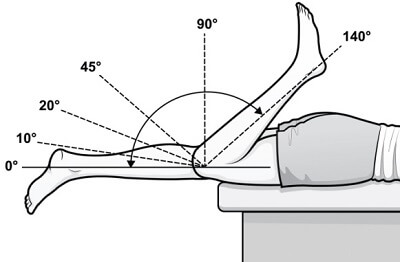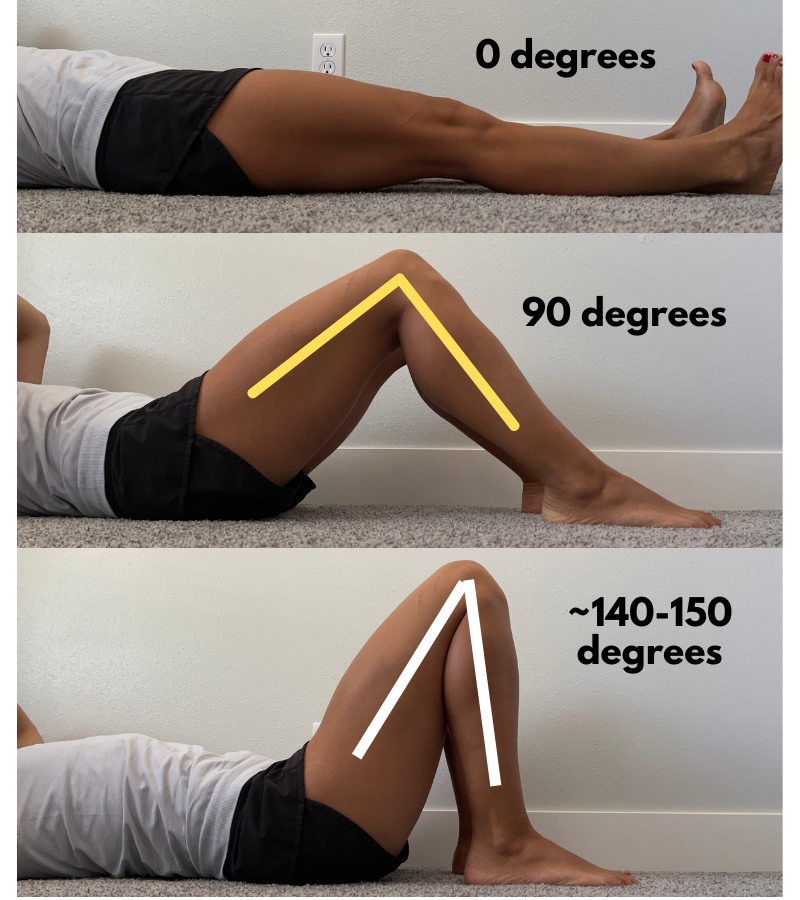
What does a 120 degree knee bend look like? It’s the angle formed when your knee flexes, bringing your calf about one-third closer to your thigh. This knee flexion is a pivotal milestone in knee replacement recovery, enabling daily activities like climbing stairs or squatting.
In 2025, advancements in physical therapy and tailored exercise programs will help patients achieve 120 degrees of knee range of motion, reducing knee pain and restoring mobility after total knee replacement. This bend signifies progress toward an active life with improved knee health.
The knee is a hinge joint connecting the femur to the tibia, stabilized by ligaments like the ACL, PCL, MCL, and LCL. Knee flexion occurs when you bend your knee, reducing the angle between thigh and calf. A 120-degree knee bend positions the calf significantly closer to the thigh, facilitating movements like sitting or climbing a stair.

In knee replacements, damaged joint surfaces are replaced with prosthetics, which may initially restrict flexibility. Understanding knee anatomy helps patients and physical therapists create exercise plans to regain a full knee bend. Quadriceps and hamstrings drive bending and straightening, while ligaments ensure stability. Without proper therapy, swelling or scar tissue can limit achieving 120 degrees.
A 120-degree knee bend is critical for functional mobility. Sitting requires about 90 degrees of knee flexion, but climbing stairs or squatting demands closer to 120 degrees. This range of motion allows fluid movement without a limp, enhancing daily activities like kneeling or rising from a low seat.
After total knee replacement, patients typically target 120 degrees within 8 weeks, depending on prehab and physical therapy adherence. 2025 studies show that achieving this milestone correlates with 70% better mobility and reduced joint pain, making it a cornerstone of successful recovery.
| Activity | Required Knee Flexion |
| Sitting in a chair | 90 degrees |
| Climbing stairs | 100–120 degrees |
| Squatting or kneeling | 120–130 degrees |
| Walking without a limp | 60–90 degrees |
What does a 120 degree knee bend look like in terms of sensation? In a healthy knee, it feels smooth and natural. Post-knee surgery, however, patients may experience mild stiffness or a pulling sensation due to swelling or adapting muscles and soft tissue.
A physical therapist guides patients to gradually increase knee flexion through controlled exercises. Over time, the knee bend becomes less restrictive, improving the ability to bend your knee. Consistent therapy minimizes discomfort, ensuring the knee joint regains flexibility without risking fracture or ligament damage.
Total knee replacement (TKR or TKA) addresses osteoarthritis or severe joint pain by replacing damaged knee surfaces with prosthetics. What does a 120 degree knee bend look like after TKA? It’s a sign of successful recovery, enabling tasks like squatting or climbing stairs with ease.
The prosthetic joint may feel stiffer than a natural knee, requiring physical therapy to achieve 120 degrees. 2025 data highlights that prehab—strengthening muscles pre-surgery—accelerates knee replacement recovery. Without consistent exercise, scar tissue can hinder knee flexion, making it harder to bend your knee fully.

Achieving a 120-degree knee bend relies on targeted exercises to boost flexibility and muscle strength. A physical therapist designs a home exercise program to safely enhance knee flexion. Key exercises include:
These exercises should be performed under PT supervision to avoid overstraining the knee joint, ensuring steady progress toward a full knee bend.
Physical therapy is essential for knee replacement recovery, guiding patients to a 120-degree knee bend. What does a 120 degree knee bend look like in therapy? It’s the ability to perform a deep squat or climb a stair without knee pain. Physical therapists use manual techniques and exercises to reduce swelling and enhance mobility.
In 2025, PT incorporates motion-tracking technology to monitor knee range of motion precisely. Patients attending therapy 2–3 times weekly often achieve 120 degrees within 8 weeks, while inconsistent effort may prolong stiffness and limit flexion.
Measuring knee flexion tracks recovery progress. A physical therapist uses a goniometer to assess the knee bend angle. What does a 120 degree knee bend look like on a goniometer? The knee forms a 120-degree angle, with the calf significantly closer to the thigh.
At home, estimate knee range of motion by observing:
Regular measurements ensure progress toward total knee replacement recovery.
Reaching a 120-degree knee bend can be challenging due to swelling, scar tissue, or weak muscles. Osteoarthritis or prior injuries like an ACL tear may complicate recovery. What does a 120 degree knee bend look like when hindered? It feels tight or restricted, with knee pain limiting motion.
Strategies to overcome challenges:
Early intervention ensures smoother knee surgery recovery.

A 120-degree knee bend transforms daily activities. What does a 120 degree knee bend look like in practice? It’s climbing stairs, squatting, or sitting cross-legged with ease. This range of motion restores independence and reduces reliance on assistive devices.
Limited knee flexion restricts tasks like kneeling or entering a car. 2025 studies show patients with 120 degrees of knee flexion experience 70% better mobility than those at 90 degrees, underscoring its role in an active life.
The timeline for a 120-degree knee bend varies. After left total knee replacement or TKR, most reach 120 degrees within 8 weeks with diligent physical therapy. What does a 120 degree knee bend look like during recovery? It’s a gradual shift from 15 degrees of extension to deeper flexion.
Factors influencing timeline:
Supporting your knee during total knee replacement recovery is vital for a 120-degree bend. What does a 120 degree knee bend look like when supported? It’s a stable, pain-free motion. Tips to support your knee:
These steps enhance knee health and promote successful recovery.
Muscle strength underpins a 120-degree knee bend. Quadriceps, hamstrings, and calf muscles control knee flexion and extension. What does a 120 degree knee bend look like with weak muscles? It’s unstable or painful, as the knee joint lacks support.
Key exercises for muscle function:
Strong muscles before and after surgery ensure smoother knee replacement recovery.
A 120-degree knee bend offers lasting benefits. What does a 120 degree knee bend look like long-term? It’s fluid mobility for daily activities, from climbing stairs to kneeling, with minimal knee pain. This range of motion supports an active life and reduces joint strain.
Patients maintaining 120 degrees report better knee health and pain relief, per 2025 rehabilitation data. Consistent exercise and physical therapy ensure the new knee remains functional, preventing stiffness or regression in flexibility.

What is a 120-degree knee bend?
A 120-degree knee bend occurs when the knee flexes to a 120-degree angle, enabling tasks like squatting or climbing stairs, a key goal in knee replacement recovery.
How long does it take to achieve 120 degrees after TKR?
Most patients reach 120 degrees within 8 weeks post-surgery with regular physical therapy, though individual factors like muscle strength affect timelines.
What exercises help achieve a 120-degree knee bend?
Heel slides, seated knee flexion, and stationary cycling improve knee flexion and range of motion under PT guidance.
Why is 120 degrees important for knee recovery?
120 degrees of knee flexion enables daily activities like climbing stairs, reducing limp and enhancing mobility post-knee surgery.
Can swelling prevent a 120-degree knee bend?
Yes, swelling can limit knee flexion. Ice, elevation, and physical therapy help reduce it to achieve 120 degrees.
What does a 120-degree knee bend look like visually?
It’s when the calf is about one-third closer to the thigh, allowing a deep squat or comfortable stair climbing.
How can I measure my knee flexion at home?
Estimate knee range of motion by comparing your bend to tasks like sitting (90 degrees) or squatting (120 degrees).
Achieving a 120-degree knee bend is a transformative milestone in knee replacement recovery, enabling daily activities like climbing stairs, squatting, or kneeling with ease. What does a 120 degree knee bend look like? It’s a smooth, stable flex that restores mobility and reduces knee pain, supported by physical therapy, exercise, and muscle strength.
In 2025, advanced PT protocols and technology make this goal more attainable, helping patients recover faster and return to an active life. Consistency, proper therapy, and patience are key to overcoming challenges like swelling or stiffness, ensuring a successful recovery.
Key Takeaways: